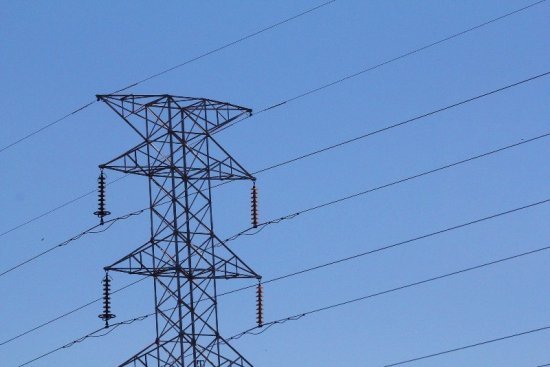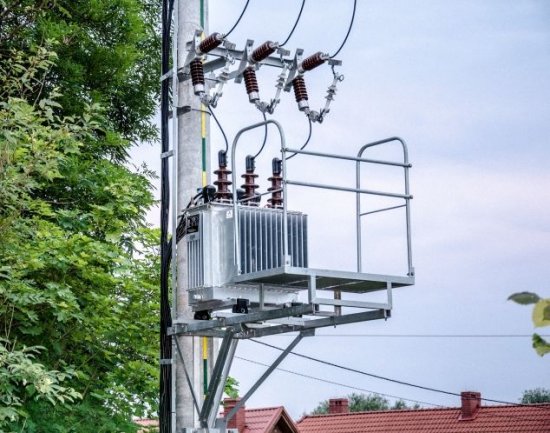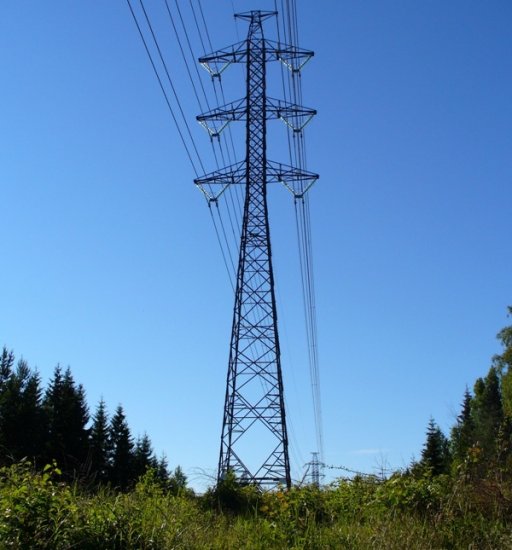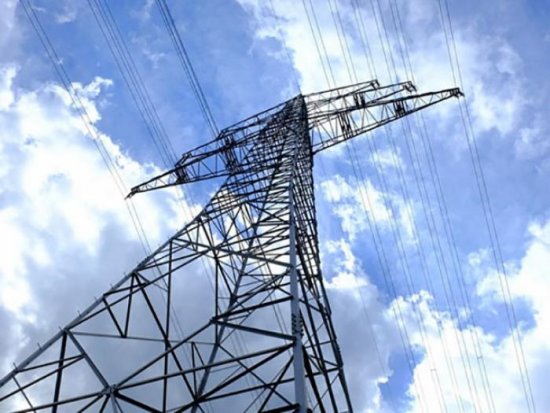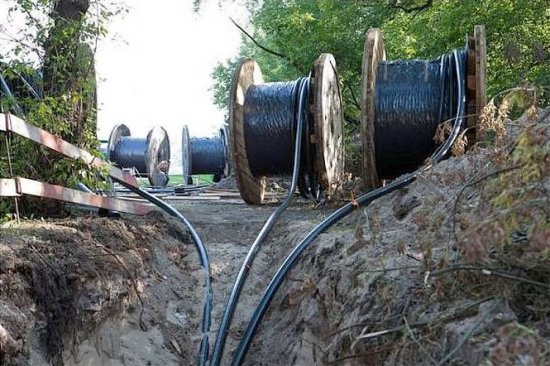Overhead and cable power lines: a brief description, advantages and disadvantages
Power lines are designed to transfer electrical energy from a power source (power plants) to consumers — in homes, offices, and various businesses. Electricity from the power plant to the end user travels a long way through many different step-up and step-down distribution substations, between which the electricity is transmitted via overhead and cable power lines.
Let's look at what overhead and cable power lines are and we will give their advantages and disadvantages.
Overhead power lines
Transmission of electricity overhead power line it is carried out by wires that are outdoors and supported above the ground on supports with the help of special fasteners (crossbars), insulators and other devices used to fasten, connect and branch wires. All these devices are called linear fittings of overhead power lines.
The power line on the supply side and on the consumer side is connected to the distribution equipment of the substation. If the electrical equipment is located outdoors, outdoors, then such a distribution device is called OSG — open switchgear.
The overhead line is fed to a linear portal — a structure to which wires are suspended through insulators. Drops to the line disconnectors are connected from the line portal to the line conductors.
In addition to distribution substations on the supply and consumer side, disconnectors can also be installed on power lines.
Disconnector — part of the equipment designed to switch on (switch on and off) and create a visible break in the electrical circuit to ensure safety when servicing power lines and other items of electrical equipment.
A long-line disconnector can be installed on power lines, as well as on taps (branches) to allow the line to be split for easier location of the fault and, if necessary, carrying out repair work.
If the switchgear of the substation is made indoors (closed switchgear), then the overhead line must be brought into the building.
To enter the overhead line, a traverse with insulators is mounted on the wall of the building, to which the wires of the overhead line are connected. A cable is connected to the wires, which enters the building through a pipe installed in the wall.
The entry of the overhead line into the building can be done using a pipe stand that is installed on the roof of the building or near the building, while the cable will also be entered into the building through the pipe.
In service buildings, instead of pipes for cable entry, holes can be made in the wall. If the introduction of the overhead line into the building is carried out with a cable, then such a line is considered cable-overhead (KVL) — this must be taken into account when operating the line.
Line input can be done without using a cable; special bushings are used for this. The bushings are installed in the wall of the building, the wires of the power line are connected to the entrances from the outside, and flexible busbars or rigid busbars with a flat, tubular or box section are connected inside the building.
For protection against possible overvoltages on the first support of the overhead line or during descents to the line disconnector, as well as at the inputs whole transformer substations (KTP) or mast (pole) substationsinstalled on the line, arresters or surge arresters are installed.
In addition, on overhead lines with a voltage of 35 kV and higher, for protection against lightning surges along the entire length of the line, a lightning protection conductor, and on the line portals of distribution substations at both ends of the line — lightning rods.
The main advantages of the overhead power line:
-
lower price compared to cable lines;
-
simplicity of search and repair of damage.
The most common types of overhead line damage are broken wires, damage to an insulator or other structural element of an overhead line.
These faults are diagnosed by visual inspection when bypassing the line after an emergency stop and are in most cases quickly rectified without the need for specialized equipment, test installations and earthworks. An exception is the case of destruction of the insulator of one of the supports.
In this case, with a decrease in the dielectric strength of the insulator, current will flow through it, and the presence of grounding will be recorded in this section of the electrical installation.
Advantages of overhead power lines may also include the ability to transmit high frequency (HF) signals over power lines that are used for telephone communication, transmission of telemetry data, data from automated dispatch systems for process control (ASDTU), signals from protection relay devices and automation.
To implement an HF communication channel between substations, at the beginning and end of the line, special equipment is installed at the line portal: a high-frequency trap, a coupling capacitor, a coupling filter and a number of other devices through which HF signals are received, converted and transmitted over power lines .
In addition, overhead transmission line supports can be used to lay optical communication lines. Fiber optic cable comes in different types. A conventional communication cable is attached or wound on one of the phase conductors or on a ground conductor. Self-supporting non-metallic communication cable can be laid independently of overhead line supports independently. There are also optical communication lines embedded in a phase conductor or lightning protection cable.
The disadvantages of overhead lines are:
-
large area of the protection zone: depending on the voltage class from 10 to 55 m on both sides of the end wires of the overhead line;
-
high probability of lightning surges occurring in the event of a lightning strike, as well as damage to overhead lines due to adverse weather conditions: as a result of collision of conductors, breakage of a conductor from an insulator or breakage of a conductor by wind or falling trees, such as and due to icing of wires;
-
the possibility of damage when working with special equipment near the line with non-observance of the permissible distance to the wires of the overhead line (depending on the voltage class from 1 to 10 m), as well as when transporting oversized cargo or transport under the line;
-
the possibility of electric shock if people approach the damaged part of the overhead line, a conductor lying on the ground (voltage cascade). Also the danger is approaching the wires of the working overhead line at an unacceptable distance;
-
in terms of environmental impact, overhead lines are a source of danger to birds, which often die from electrocution.
Cable power lines
A cable transmission line is a transmission line that consists of one or more parallel cables, end and connecting bushings, as well as various fasteners.
The cable consists of two or more conducting cores, each core has an insulating cover, and all cores are generally covered with an outer insulating sheath.
Depending on the type, the cable can structurally have a number of other components: a metal cable, a sheath (aluminum or steel), filling the gap between the core, a protective armor (tape or wire), a sealing layer and a number of other intermediate layers of insulation.
There are some types of cables into which a special gas or oil is pumped to provide the necessary insulating properties, which are located in the cavity of the cable under a certain pressure.
The advantages of cable lines are as follows:
-
protective zone of the cable line — 1 m from the cable in both directions, regardless of the voltage class;
-
a wide range of applications, the ability to choose the optimal installation method, depending on local conditions. The cable can be laid in the ground, on supports, in tunnels, blocks, trays, channels, galleries, collectors, etc. Ability to quickly connect the power supply to temporary objects without the need for complex electrical work;
-
protection from adverse weather conditions, lightning;
-
safety during operation, which makes it possible to lay power lines in populated areas in places where people gather, intense traffic, as well as in other places where the construction of overhead lines is difficult or impossible;
-
no access to the line for unauthorized persons.
Disadvantages of cable lines:
-
excessive displacement and subsidence of the soil can lead to deformation, stretching and, as a result, damage to the cable line;
-
the likelihood of mechanical damage as a result of uncoordinated excavation works near the cable route;
-
more complicated, compared to overhead lines, search and removal of the damaged area.In order to eliminate the damage, it is necessary to carry out earthworks, the availability of specialized equipment to find the place of damage, check the insulation of the line, as well as installation equipment connectors… After removing the damage, it is necessary verifying the correctness of the phasing.

